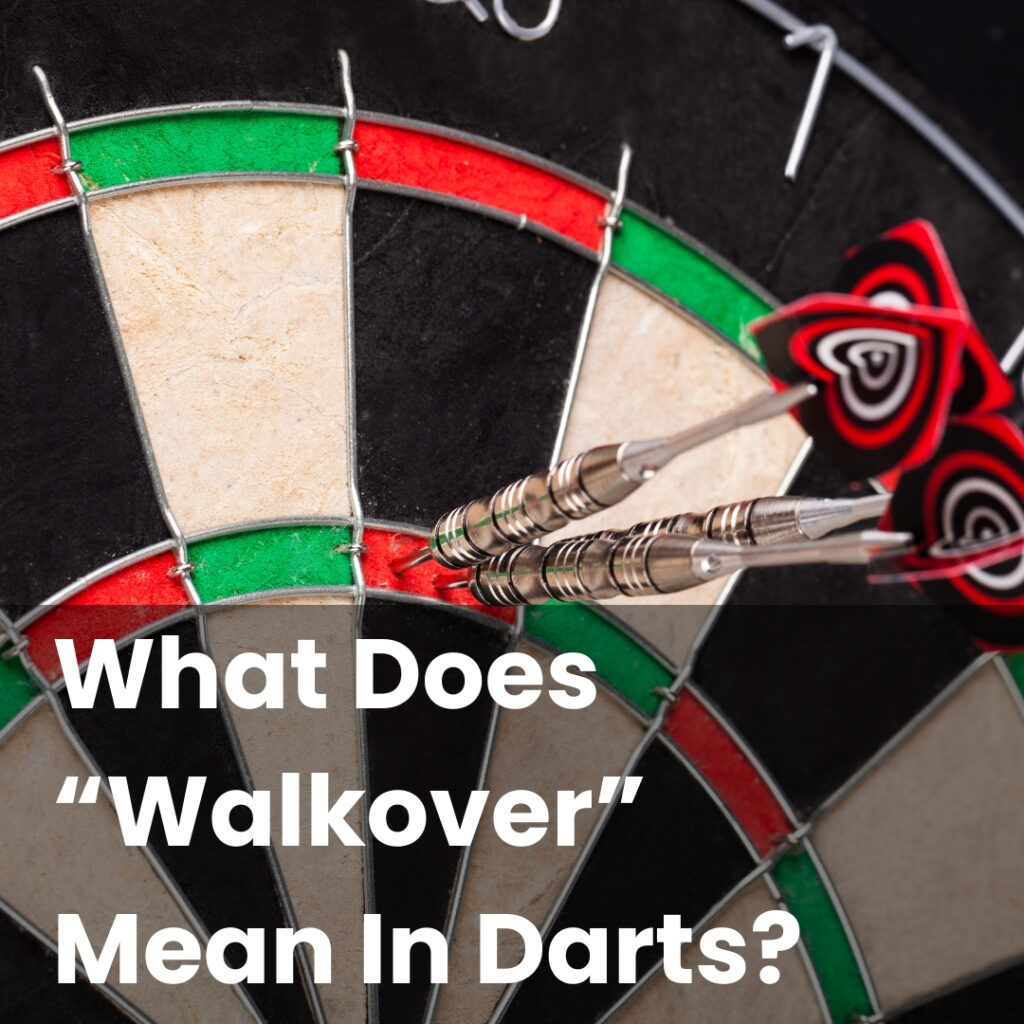Have you heard the term “walkover” mentioned in darts and wondered what it means?
In the world of darts, just like in many sports, this term can pop up, sometimes leaving new fans scratching their heads.
Knowing what “walkover” means can help you understand what’s going on when you’re watching a game. It’s not a term people hear every day, but in darts and other sports, it carries specific significance.
In this blog post, you’ll find a simple explanation of what a “walkover” in darts involves and when it might occur. Whether you’re new to the world of darts, or just expanding your vocabulary, find out how this can affect the matches and what it signifies for the players involved.
What Is a Walkover In Darts?
In darts, a walkover happens when one player wins a match without having to throw a single dart. This situation occurs if their opponent is unable to compete. The reasons can vary, including illness, injury, or even a breach of competition rules.
When a walkover is declared, the player who is present and ready is awarded the victory. This means they progress to the next round, or stage of the competition, depending on the format of the event. Despite not actually playing, the win and any associated benefits, like ranking points, are given to the player present.
While walkovers can be a bit of an anti-climax for players and fans alike, they ensure the tournament continues smoothly. For those involved, it highlights the importance of being able to participate in every scheduled match.
Darts Walkover Example
Imagine you are watching a darts competition featuring skilled players from across the UK. The tournament moves along smoothly until a bit of unexpected drama unfolds.
One match is set between two well-known dart players. Let’s call them Player A and Player B. As the match approaches, everything seems in place for an exciting showdown. However, on the day of the match, it’s announced that Player B is unable to participate. This could be due to an unforeseen illness, or perhaps an injury.
In these circumstances, Player A is declared the winner of the match without any darts being thrown. The announcement might surprise those who follow the tournament, but it does illustrate how a walkover works in a real-world setting. This allows Player A to advance in the competition without competing in the scheduled match.
Does a Walkover Count As a Win?
In darts, when a walkover occurs, the player ready to compete is awarded a win. This means that in the official tournament records, it’s marked as a victory for that player. It’s a way to acknowledge their advancement in the competition, despite not having thrown any darts in that particular match.
While it’s counted as a win, achieving victory through a walkover can feel different. The player progresses to the next round, but without the challenge of facing their opponent on the oche, which is the area where players stand to throw their darts.
The awarding of ranking points or other benefits can vary depending on the tournament rules. Organisers might have specific guidelines, and these rules ensure fairness in how wins and progression are recorded.



